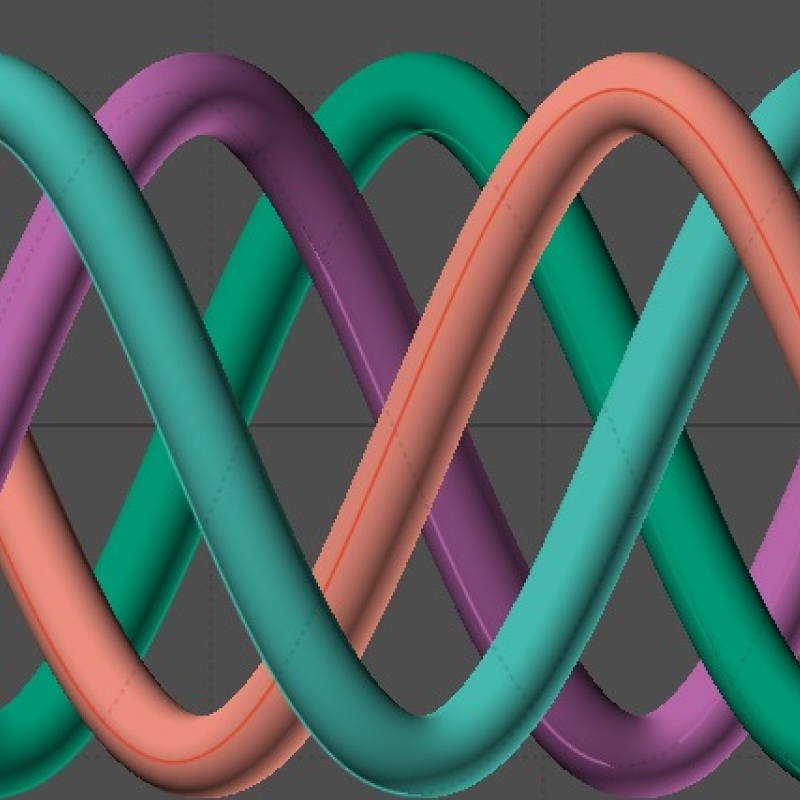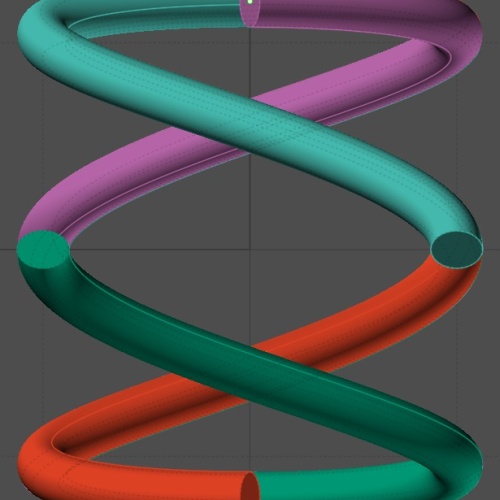Linearizing a Baided Band.
The Braided Band script produces a class of knots, commonly known as "Turk's head knots", (There is no cultural stigma intended.) There is a "disk" version, and a "cylindrical" version, which are topologically the same, as a flexible physical model can be manipulated to either form. The inside center edge and outside edge of the disk version are equivalent to the top and bottom edge of the cylinder version. The disk version can be thin, and the cylindrical version can be thin walled. See the link to Skip Pennock's paper, for detailed descriptions.
http://www.mi.sanu.ac.rs/vismath/pennock1/index.html
Leads are the number of trips around a cicle. (= 2*PI*Leads)
The Braided Bands are defined parametrically in cylindrical coordinates.
It comes to mind that a Braided Band could be unrolled, to give a straight braid or weave. Better yet, rather than circularize the cylindrical coordinates and then unroll them, just present the cylindrical coordinates as linearized. This was accomplished using the equations for the cylindrical version, in the BraidedBands3 script.
z coordinates are the same.
y coordinates are the thickness.
x coordinates are the arcLength, MidrangeRadius * theta2.
For a 7 Bight, 4 Lead Linear Band, the result is ONE curve, with sine and cosine bends, rather than 4 curves. There are 21 cycles.
For relatively prime Bights and Leads, The number of cycles is q * ( p-1 ). = Bights * ( Leads - 1 ).
The curve can be divided into 4 pieces.
Place a point at the start of the curve, and ArrayCurve the point on the curve, using a value of 5. (5 = (Leads+1)).
Trim the curve with these points, resulting in 4 curves.
Move the 3 curves on the right, to the left, back to the origin.
The result is a 4 curve weave, which can be swept with a circle, usually the
diameter of the circle to use is the cord diameter.
An end view of the curves looks like a "race-track".
This could be scripted, or the 4 curves formed initially at 2PI intervals, either by script, or by nodeeditor.
BraidedBands3Alpha is a quick kludge modification. The menu should be changed to have a Build menu. For Disk, checkbox Disk. For Cyl, do not checbox Disk, nor Straight. For Straight, checkbox Straight, but NOT Disk.
The weave unit can be chained, end to end.
The chain should be flowable to some other curve, kind of like chain script.
A circle sweep bug was found. The bug was the same in V4 and V5Beta.
For some weaves, a circle will not sweep two selected curves correctly. A circle will sweep ONE selected curve at a time.
Some other weaves sweep multiply selected curves jus fine.
Multiple Ply's should be do-able, with more scripting.

Here is the "race-track" end view:

- Brian
Edit, Version 3 alpha deleted. See Version 4 in a later post.